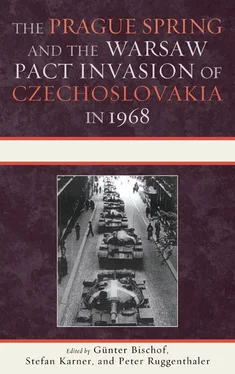6. S. D. Rozhdestvensky, “Materiali k istorii samodeiatel’nikh politicheskikh ob’edinenii v SSSR posle 1945 goda,” Pamyat’: Istoricheskii sbornik , Vypusk 5 (Moscow: IMCA, 1981–1982), 231–33; interview of Tatiana Kosinova with Lev Krasnopevtsev, 10 August 1992, the Archive of Memorial Society, Moscow.
7. Katerina Gerasimova, “Public Privacy in the Soviet Communal Apartment,” in Public Spheres in Soviet-Type Societies , ed. Gabor Rittersporn et al. (Frankfurt am Main: P. Lang, 2003); Orlando Figes, The Whisperers: Private Life in Stalin’s Russia (New York: Metropolitan Books, 2007), 174–86.
8. Ludmilla Alexeyeva and Paul Goldberg, The Thaw Generation: Coming of Age in the Post-Stalin Era (Pittsburgh: University of Pittsburgh Press, 1990).
9. Paul R. Josephson, New Atlantis Revisited: Akademgorodok, the Siberian City of Science (Princeton, NJ: Princeton University Press, 1997); Anna Eremeeva, Rossiyskie uchyonye v usloviyakh sotsial’no-politicheskikh transformatsiii XX veka (St. Petersburg: Nestor, 2006), 137–49.
10. Emily Lygo, “The Need for New Voices: Writers’ Union Policy towards Young Writers, 1953–1964,” and Susan E. Reid, “Modernizing Socialist Realism in the Khrushchev Thaw: the Struggle for a ‘Contemporary Style’ in Soviet Art,” in Jones, The Dilemmas of De-Stalinization , 193–230.
11. On the transformations and contested meanings of the intelligentsia in Soviet Russia see Lynn Mally, Culture of the Future: The Proletkult Movement in Revolutionary Russia (Berkeley: University of California Press, 1990); Mark D. Steinberg, Proletarian Imagination: Self, Modernity, and the Sacred in Russia, 1920–1925 (Ithaca, NY: Cornell University Press, 2002); Katerina Clark, Petersburg, Crucible of Cultural Revolution (Cambridge, MA: Harvard University Press, 1995); Boris Uspensky, “Russkaya intelligentsia kak spetsificheskii fenomen russkoy kul’turi,” in Etyudi o russkoy istorii (St. Petersburg: Azbuka, 2002); D. S. Likhachev, ed., Russkaya intelligentsia: Istoriya i sud’ba (Moscow: Nauka, 1999).
12. Znamya 7 (2000): 136.
13. Aleksander Solzhenitsyn, Bodalsya Telenok s Dubom: Ocherki literaturnoy zhizni (Paris: IMKA, 1975), 63; the diary of Communa-33, TsADKM, f. 193, op. 1, d. 3, ll. 91–92.
14. Kornei Chukovsky on 19 November 1962 in his Dnevnik 1930 – 1969 (Moscow: Sovetskii pisatel, 1994), 328; Lidia Chukovskaya, Zapiski ob Anne Akhmatovoy , vol. 2 (Paris: YMCA, 1976), 536–57, 552, 556, 560–62.
15. Raisa Orlova and Lev Kopelev, My zhili v Moskve (Moscow: Kniga, 1990), 83–84.
16. William Taubman, Khrushchev: The Man and His Era (New York: Norton, 2003), 582, 590–95; Rabichev, “Manezh 1962,” 132; Andreĭ Voznesensky, Proza (Moscow: Vagrius, 2000), 190–91; Yevgeny Yevtushenko, “Fekhtovanie s navoznoy kuchey,” Volchii pasport (Moscow: Vagrius, 1998), 196.
17. On the spirit of the 1960s as the ephemeral search for the Third Way, see Tony Judt, Postwar: A History of Europe Since 1945 (New York: Penguin, 2005), chaps. 11–12.
18. David Samoilov, Podennye zapisi (Moscow: Vremia, 2002), 1, 268. Soviet Society in the 1960s 99
19. Anatoly Smeliansky, The Russian Theater after Stalin (Cambridge: Cambridge University Press, 1999), 24–29.
20. Joseph Rothschild and Nancy M. Wingfield, Return to Diversity: A Political History of East Central Europe since World War II , 3rd ed. (New York: Oxford University Press, 2000), 73.
21. Vladimir Kozlov and Sergei Mironenko, eds., Kramola: Inakomyslie v SSSR pri Khrushcheve i Brezhneve 1953–1982 gg. (Moscow: Materik, 2005), 125; Mikhail Gorbachev, Zhizn’ i reformy , kniga 1 (Moscow: Novosti, 1995), 84.
22. Vera Sandomirsky-Dunham’s recollections during her meeting with the author, Washington, DC, 3 October 1999.
23. Recollection of Rada Adzhubei, in Pressa v obshchestve , 18; Aleksei Adzhubey, Krushenie illyuzii (Moscow: Izd-vo SP “Interbuk,” 1991), 205.
24. For an explanation of this phenomenon, see Yuri Slezkine, The Jewish Century (Princeton, NJ: Princeton University Press, 2004).
25. Vassily Aksyonov, “TsPKO im. Ginzburga,” Moskovskie Novosti , 8 August 2002.
26. Vladimir Shlapentokh, Strakh i druzhba v nashem totalitarnom proshlom (St. Petersburg: Zvezda, 2003), 132.
27. On the role of the intelligentsia as a generator of nationalism and the special inhibitions operative in the Russian case, see Nathaniel Knight, “Was the Intelligentsia Part of the Nation? Visions of Society in Post-Emancipation Russia,” Kritika 7, no. 4 (Fall 2006): 733–58. On the nationalist trends among Russian intellectuals, see Yitzhak M. Brudny, Reinventing Russia: Russian Nationalism and the Soviet State , 1953–1991 (Cambridge, MA: Harvard University Press, 1998); Nikolai Mitrokhin, Russkaya partiya: Dvizhenie russkikh natsionalistov v SSSR 1953–1985 (Moscow: Novoe literaturnoe obozrenie, 2003); Geoffrey Hosking, Rulers and Victims: The Russians in the Soviet Union (Cambridge, MA: Harvard University Press, 2006), 345–52.
28. S. V. Volkov, Intellektualnyi sloi v sovetskom obshchestve (Moscow: Fond Razvitie, 1999), 30–31, 126–27.
29. Paul R. Josephson, New Atlantis Revisited , 23; L. G. Churchward, The Soviet Intelligentsia (London, Routledge, 1973), 9.
30. The role of Tvardovsky and Novy Mir in the 1960s remains contested in Russian publications to this day. See, for example, Yuri Burtin, “O Staliniste Tvardovskom, kotoryi terpel i molchal,” Nezavisimaya gazeta , 8 April 2000; Regina Romanova, Alexandr Tvardovsky: Trudy i dni (Moscow: Vodolei, 2006); E. Vysochina, ed., A. Tvardovsky, M. Gefter: XX vek, Gologrammy poeta i istorika (Moscow: Novii khronograf, 2005).
31. Vladimir Shlapentokh, Strakh i druzhba v nashem totalitarnom proshlom (St. Petersburg: Zvezda, 2003), 169–74; physicist Arseny Berezin to the author, interview in Washington, DC, 15 November 2000.
32. Shlapentokh, Soviet Intellectuals and Political Power: The Post-Stalin Era (Princeton, NJ: Princeton University Press, 1990), 172; also see Malin notes in A. A. Fursenko, ed., Prezidium TsK. 1954–1964. Chernovyie protokol’nyie zapisi zasedanyi. Stenogrammi. Postanovleniya , vol. 1 (Moscow: ROSSPEN, 2003), 865; and Rudolf Pikhoia, Sovetskii Soiuz: Istoriya Vlasti, 1945–1991 (Moscow: RAGS, 1998), 283.
33. KGB to the CC CPSU, 3 March 1965, RGANI f. 5, op. 30. 462. ll. 19–22.
34. On Soviet economic debates, see Moshe Lewin, Stalinism and the Seeds of Soviet Reform: The Debates of the 1960s (Armonk, NY: M. E. Sharpe, 1991), 134–35; Pekka Sutela, Socialism, Planning, and Optimality: A Study in Soviet Economic Thought (Helsinki: Societas Scientiarum Fennica, 1984). On the role of cybernetics, see Slava Gerovitch, From Newspeak to Cyberspeak: A History of Soviet Cybernetics (Boston: MIT Press, 2002); Nikolai Krementsov, Stalinist Science (Princeton, NJ: Princeton University Press, 1997).
35. Roy Medvedev, “Dissidenty o dissidentstve,” Znamya-plus (1997/1998): 171; Aleksandr Solzhenitsyn, “Obrazovantshina,” in Iz-pod glyb (Paris: YMCA, 1974) and reprinted in Likhachev, Russkaya Intelligentsia , 136.
36. Robert English, Russia and the Idea of the West: Gorbachev, Intellectuals, and the End of the Cold War (New York: Columbia University Press, 2000).
37. Report of Martin Schtigler, “The Youth of the Soviet Union,” 14th Conference of the Institute for the Study of the USSR, Munich, 1962, 70, the Open Society Archive, Budapest, The Collection of “The Red Archive,” Box 497; Philip Hanson, The Rise and Fall of the Soviet Economy (London: Longman, 2003), 97.
Читать дальше












